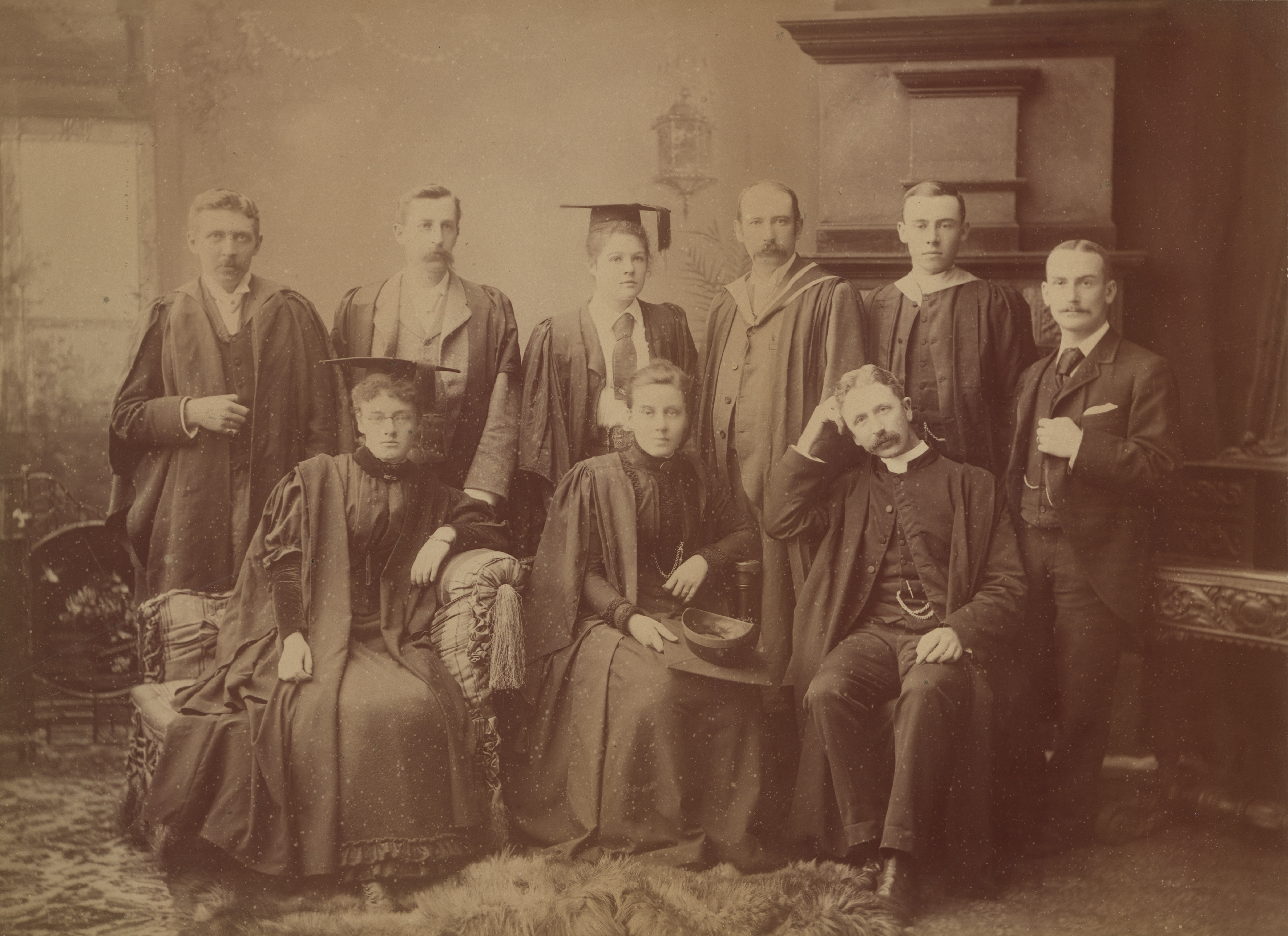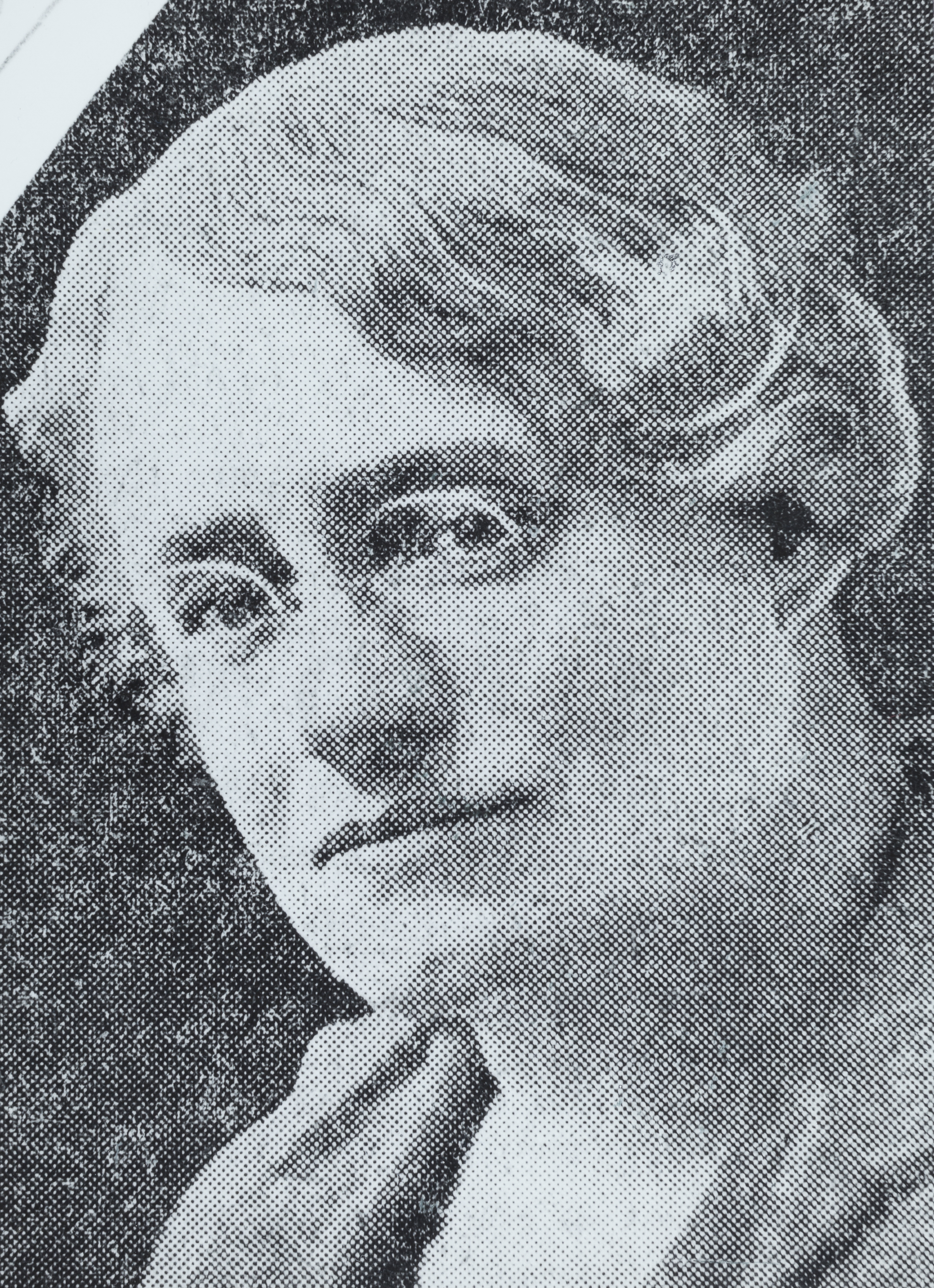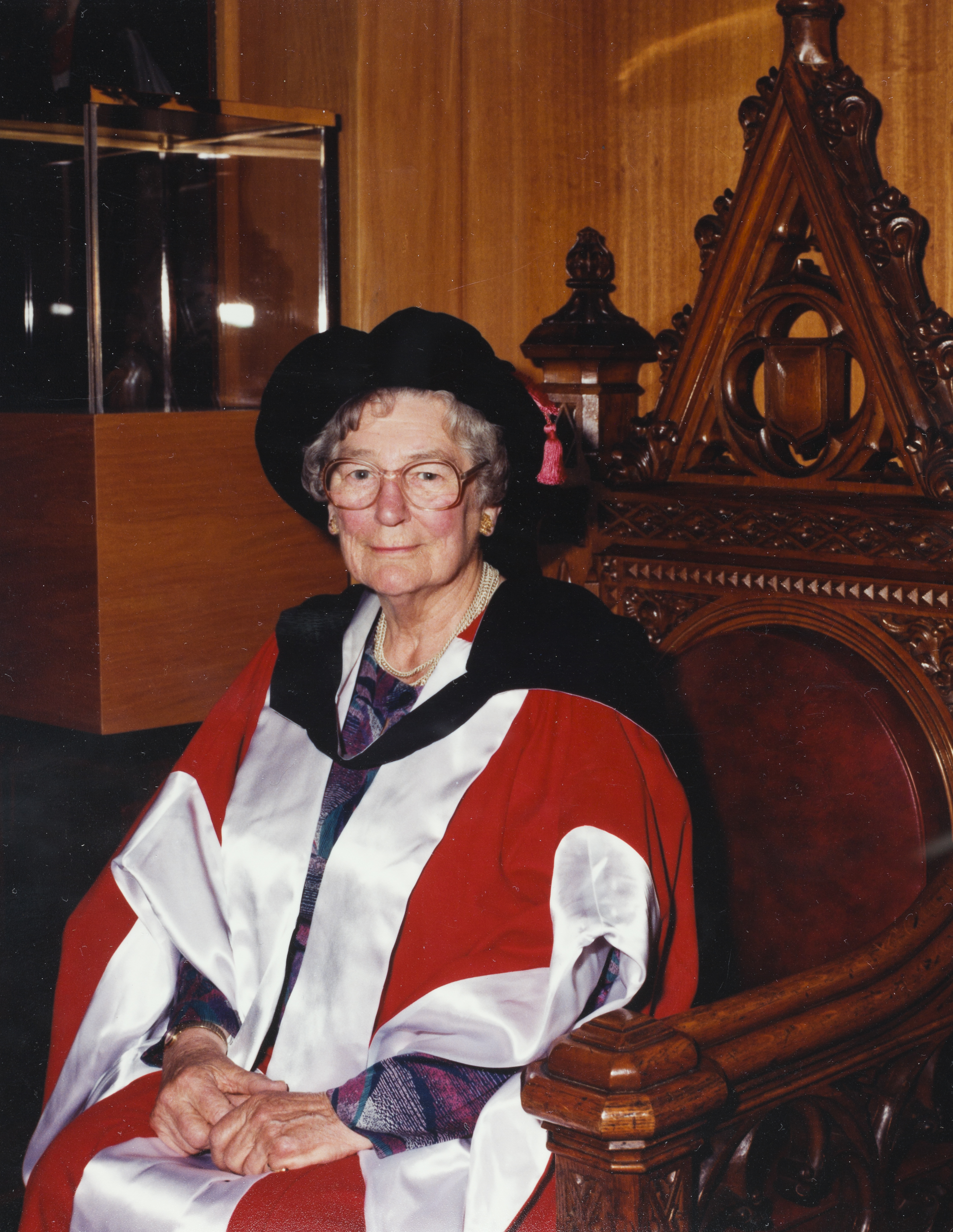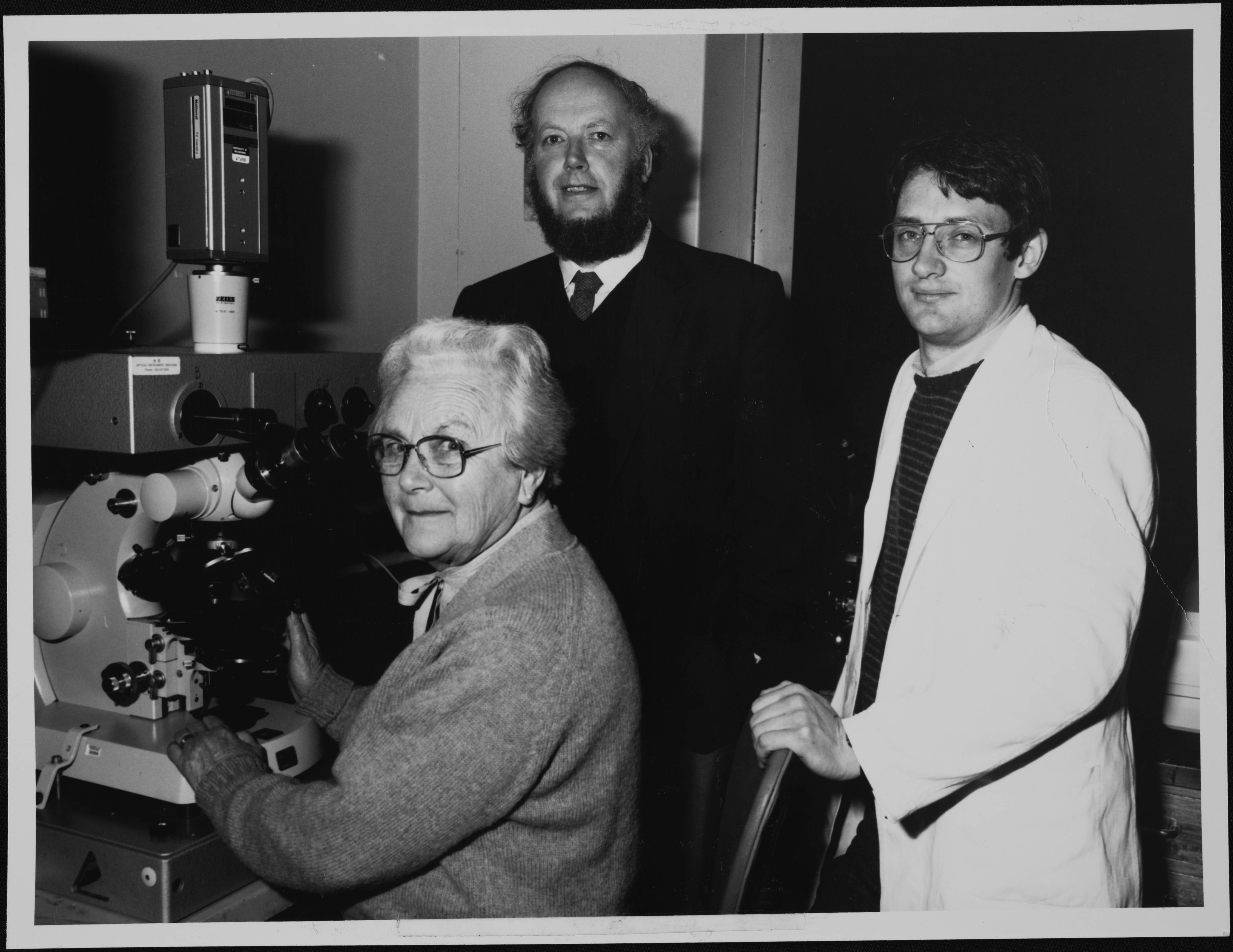Academia: Women in science and technology

Georgina Sweet (1875-1946) (1992.0172)

University of Melbourne Photographs, BWP/7229, 2017.0071.00531.a
Sweet concentrated her research on parasites affecting Australian stock and became regarded as Australia’s leading parasitologist. Graduating with a Bachelor of Science in 1896, Masters of Science in 1898 and a Dsc in 1904, in 1920, Sweet became the first woman associate professor at the University of Melbourne, (unfortunately illness prevented her from subsequently applying to be the Professor of Zoology).
The collection 1992.0172 is of interest to students of the history of science, especially parasitology, as it comprises research notes and publications for the duration of Sweet’s career. Retiring early in 1924, Sweet continued to make valuable contributions to a range of community organisations and causes including the Australian Association for the Advancement of Science, Royal Society of Victoria, the Field Naturalists’ Club and Melbourne’s Lyceum Club.
She served as the Australian President of the Young Women’s Christian Association from 1927 to 1934 and Vice-President of the world YWCA body in 1934 (see also YWCA files and consolidated finding guide 1984.0060, particularly). Refer also to the collections created by Dr Ethel McLennan, which include testimonials by Sweet (1990.0054), and relating to the study of fungi between 1905 and 1925 (1986.0053).[1]
Margaret Blackwood (1909-1986) (1988.0025)

Born 26 April 1909 in South Yarra, Margaret Blackwood graduated from the University of Melbourne with a Bachelor of Science (1938) and a Masters of Science the subsequent year.
During World War Two, Blackwood served in the Women’s Auxiliary Australian Air Force, rising from sergeant to the rank of wing officer by January 1945.[2] Service certificates, photographs, newsletters and correspondence from Blackwood’s service, and later reunions are located in 1988.0025, Units 5 and 12.
In 1946, she became Lecturer in Botany and Dean of Women at the University of Melbourne’s recently founded Mildura Campus.[3] Returning to study in 1948 on a Commonwealth Reconstruction Training Scheme scholarship, Blackwood completed her PhD at the University of Cambridge, where she worked on the inheritance of B-chromosomes in the maize species Zea mays with David Catcheside.[4]
This pioneering work on plant genetics enabled Blackwood to return to Melbourne as a senior lecturer, rising to a reader in botany. Documents, including fieldnotes, research, and her PhD can be found in the collection 1988.0025, Unit 1-3. In 1976, Blackwood was elected to the University Council and subsequently, in 1980-83 became the first female Deputy Chancellor of the University of Melbourne.
As well as being the first woman able to confer degrees, Blackwood was also the first chair and founding fellow of Janet Clarke Hall (1961-75), the first female fellow of Trinity College at the University of Melbourne (1981), and was awarded an Honorary Doctorate of Laws in 1983.[5]For files relating to Blackwood’s role in university administration and women’s working groups, particularly relating to the International Year of Women and centenary of women at the university see 1988.0025 Unit 6.
Two items in this collection are restricted as they contain personal materials. These are identified in the consolidated online finding guide.
Sophie Charlotte Ducker (née von Klemperer) (1909-2004)
Born in Dresden, Sophie studied botany at universities in Geneva and Stuttgart universities, until her family fled Germany 1938. Documents relating to her refugee flight and internment in the Tatura Enemy Aliens Detention Centre upon arrival in Australia are located in the collection 2000.0260. interned in the Tatura Enemy Aliens Detention Centre upon arrival in Australia, Upon her release in 1944, Ducker became a technical assistant in the Botany department at the University of Melbourne under Dr Ethel McLennan, and studied part-time to complete her Bachelor of Science, leading to her appointment as a Senior Demonstrator in 1953.
Ducker had a special interest in marine biology which she was instrumental in introducing to the botany curriculum, and in her retirement carried out important research on sea-grasses. In her later career, Ducker built upon her interest in the history of botany and marine biology in Australia, contributing to the Australian Dictionary of Biography entry on Irish-born algae specialist William Harvey in 1972 and later editing the book The Contented Botanist; Letters of W.H. Harvey about Australia and the Pacific (Carlton : Melbourne University Press, 1988), (which can be found in the collection 1988.0008). The collection also reflects Ducker’s interest in the history of gardening in Australia, of particular note are materials relating to the history of the University of Melbourne’s System Garden (refer to the collections 2004.0023 and 2002.0009). Ducker also gathered materials relating to her mentor Dr Ethel McLennan, whom Sophie remembered as ‘a tower of strength to women students,’ intending to complete a biography.[6] Documents relating to the life of ‘Dr Mac’, such as photographs, research notes and correspondence are contained in the collection 2015.0012.

Jean Laby (1915-2008) (2016.0091)

Described by the Australian Academy of Science as ‘probably Australia's sole woman atmospheric physicist of her generation,’ Jean Laby’s lifelong interest in physics was sparked by her father, Thomas Laby’s lessons on the refraction of light in Melbourne’s Botanic Gardens.[7]
Jean received a BSc in 1939, an MSc in 1951 on the conductivity of water and a PhD in 1959, all from the University of Melbourne. In 1940, she began to work part-time as a demonstrator in the Department of Natural Philosophy, later renamed the Physics Department. Rising quickly, Jean was appointed to the position of lecturer in 1959.[8]
Her research was in the area of cosmic rays and wind studies. From 1961-80, Laby also held a position as senior lecturer at the RAAF Academy at Point Cook, Victoria. The collection 2016.0091 includes professional papers, research data, photographs, publications, technical reports and brochures from her career at the University of Melbourne and RAAF academy.
Of particular interest is M1-M30, correspondence about collaboration with University of Wyoming and Climate Impact Assessment Program on an international study of aerosols in the atmosphere, and contracts with the Office of Naval Research. Among the collection’s documents are notebooks relating to atmospheric research including balloon experiments in Coffs Harbour and research visits to the United States and South Africa.
footnotes
- Monica MacCallum, “Sweet, Georgina (1875–1946)”, Australian Dictionary of Biography, National Centre of Biography, Australian National University, < http://adb.anu.edu.au/biography/sweet-georgina-8728/text15281> , published hardcopy 1990; see also R.J Selleck, The Shop: The University of Melbourne 1850-1939, (Carlton: Melbourne University Press, 2003), 518, 547.
- Elizabeth M. Robertson, WAAF at War: Life and Work in the Women’s Auxiliary Australian Airforce, (Canterbury : Mullaya, 1974), 105; Anne Heywood, “Women's Auxiliary Australian Air Force (WAAAF) (1941 - 1947)”, Australian Women’s Register, 5 June 2009, <http://www.womenaustralia.info/biogs/AWE0400b.htm >.
- For more information on the University of Melbourne’s Mildura Campus see Key 66: Commonwealth Reconstruction Training Scheme 1945-1949 / The Mildura Experiment 1947-1949: <http://archives.unimelb.edu.au/resources/keys-to-the-past/keys/key-66 >.
- See Margaret Blackwood, “The Inheritance of B chromosomes in Zea mays, Heredity, 10 (1956):353–366.
- Jane Carey, “Blackwood, Dame Margaret (1909–1986)”, Australian Dictionary of Biography, National Centre of Biography, Australian National University, <http://adb.anu.edu.au/biography/blackwood-dame-margaret-12218/text21911>, published hardcopy 2007.
- Sara Maroske, “Ducker, Sophie Charlotte (1909-2004),” Royal Botanic Gardens Melbourne, ASBS Newsletter, no.120, September 2004, available online: Council of Heads of Australasian Herbaria, Australian National Herbarium Biographical Notes, <https://www.anbg.gov.au/biography/ducker-sophie.html >.
- Nessy Allen, 'Dr Jean Laby (1915-2008), physicist', Australian Academy of Science, 2000, <https://www.science.org.au/learning/general-audience/history/interviews-australian-scientists/dr-jean-laby-1915-2008-physicist>.
- Juliet Flesch, “ Laby, Jean Elizabeth (1915 - 2008)”, The Australian Women’s Register, 12 September 2017, Australian Women’s Archive Project, <http://www.womenaustralia.info/biogs/AWE6072b.htm >.